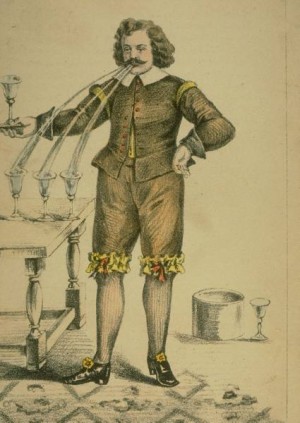Seventeenth Century
Puppidog Water for the face
In her 1690 pamphlet Mundus Muliebris, Mary Evelyn included a recipe for a woman's facial lotion. She called it "Puppidog Water for the Face":The recipe was intended to be satirical, but Fenja Gunn, in her 1973 book The Artificial Face: A History of Cosmetics, notes that it was satire rooted in contemporary realities — notably the persistent rumor that Elizabeth I's pomade was made from puppy dog fat, and the seventeenth-century belief that drinking puppy dog urine was good for the complexion.
Some more info about puppy dogs used as moisturizers can be found on the Early Modern Medicine blog:
Takes Sallet Oil four pound, two Puppy-dogs newly whelped, Earthworms washed in white Wine one pound; boil the Whelps til they fall in pieces then put in the worms a while after strain it, then with three ounces of Cypress Turpentine, and one ounce of Spirits of Wine, perfect the Oil according to Art.
Posted By: Alex - Sun Feb 05, 2023 -
Comments (2)
Category: Beauty, Ugliness and Other Aesthetic Issues, Dogs, Seventeenth Century
Haarlem Oil
Their home page.The Wikipedia page.
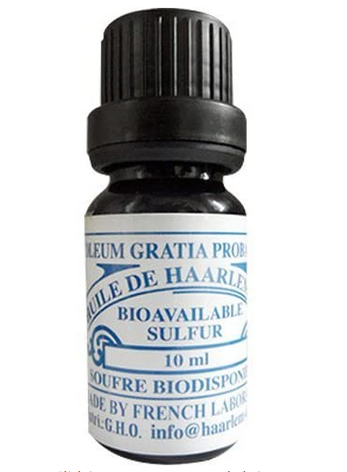
A 300-year-old "remedy," whose ingredients are:

Ad from 1920.
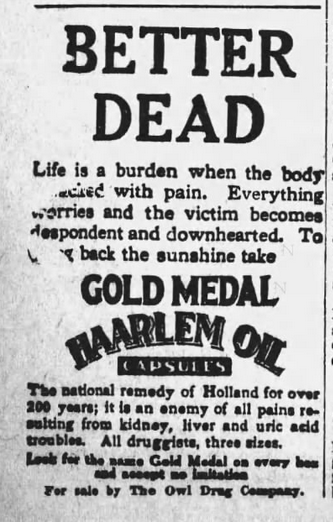
Posted By: Paul - Wed Mar 02, 2022 -
Comments (1)
Category: Animals, Patent Medicines, Nostrums and Snake Oil, Seventeenth Century
The Wicked Bible
An edition of the Bible printed in 1631 came to be known as the 'Wicked Bible' because it omitted one, important word — the word 'not' from the seventh commandment. This made the commandment read, 'Thou shalt commit adultery'. More details from The Guardian:
There's still debate about whether the omission was accidental, purposeful, or sabotage.
Only ten copies of the Wicked Bible are known to exist today. The current going price for one is around $100,000.
More info: wikipedia
Posted By: Alex - Sat Mar 13, 2021 -
Comments (10)
Category: Religion, Books, Seventeenth Century
Hamlet, the Rock Musical
Posted By: Paul - Tue Mar 03, 2020 -
Comments (0)
Category: Beauty, Ugliness and Other Aesthetic Issues, Costumes and Masks, Death, Ineptness, Crudity, Talentlessness, Kitsch, and Bad Art, Pranks and Revenge, Theater and Stage, Homages, Pastiches, Tributes and Borrowings, Pop Art, Foreign Customs, Seventeenth Century, Sixteenth Century, Brain Damage, Cacophony, Dissonance, White Noise and Other Sonic Assaults
The Angel of Hadley
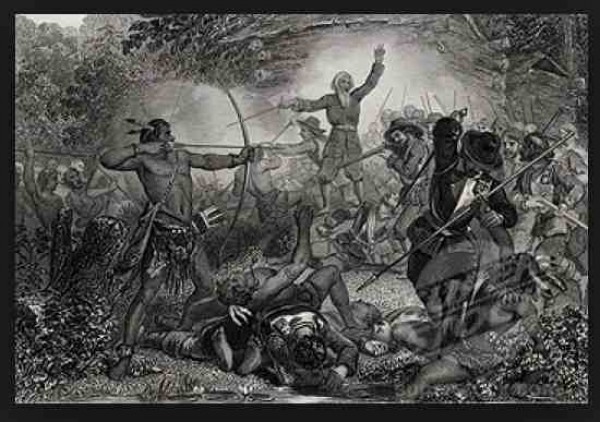
I had long been aware of the WWI legend of The Angel of Mons, in which a piece of deliberate fiction was accepted as literal truth.
But I was unaware until recently that right in my own backyard, in nearby Hadley, Massachusetts, a similar bit of fiction-as-history existed, the Angel of Hadley, the account of how a mysterious elderly warrior saved settlers from the Indians.
Another good piece on the subject here.
Posted By: Paul - Mon Dec 29, 2014 -
Comments (1)
Category: Hoaxes and Imposters and Imitators, Myths and Fairytales, Historical Figure, Europe, North America, Nineteenth Century, Seventeenth Century, Native Americans
The Coldest Case

It appears that the 126 year old cold case of Jack the Ripper has been solved by DNA testing. A shawl that was alleged to have been found next to Catherine Eddowes, one of the Ripper's victims, carries mitochondrial DNA profiles from both Eddowes' line and the familial line of one of the Ripper suspects. Polish immigrant Aaron Kosminski, who subsequently spent his later years in mental asylums, lived in the area of the killings, and was a suspect, left his DNA behind on a bloody shawl. That shawl turned out to be a time capsule for justice.
Posted By: Alex - Fri Sep 19, 2014 -
Comments (9)
Category: Crime, Death, Evil, Science, Historical Figure, Seventeenth Century, Blood
Pigeon Blood Visine
Back in the 17th century, if you suffered from a burst blood vessel in your eye, the medical treatment of the day called for squirting pigeon blood in your eye. This was to be repeated 5 or 6 times. The treatment is recorded in a number of medical manuscripts, such as this anonymously authored one from 1663 preserved in the Wellcome Collection. [via The Recipes Project]Take a pidgeon and let him blood in one of the winges in the vein & let the blood spinne out of the veine into the eye & it will helpe you yf you use it 5 or 6 tymes.
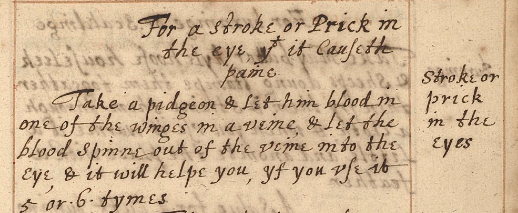
Posted By: Alex - Sat Apr 26, 2014 -
Comments (4)
Category: Medicine, Seventeenth Century
Pocket Change
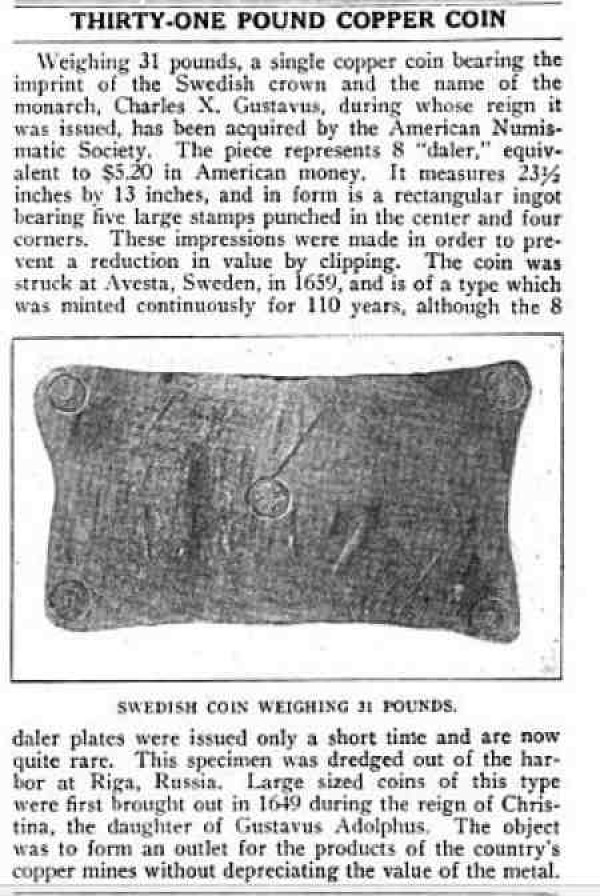
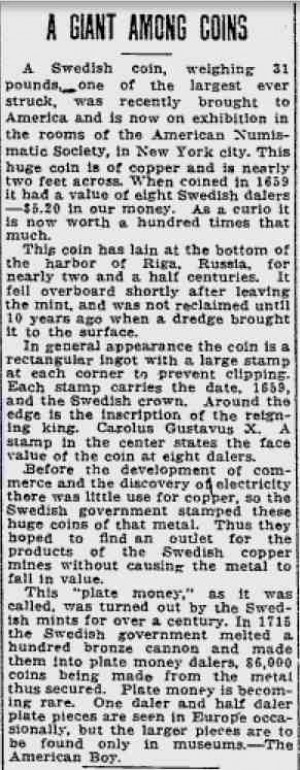
Posted By: Paul - Tue Jan 07, 2014 -
Comments (5)
Category: Excess, Overkill, Hyperbole and Too Much Is Not Enough, Money, Europe, Seventeenth Century
Floram Marchand
As magic tricks go, the "I can vomit wine" claim has died a deserved death. One imagines that neither David Copperfield, nor even Penn & Teller, will be reviving the spectacle of Floram Marchand any time soon.Floram Marchand: The Great Water Spouter
In the summer of 1650, a Frenchman named Floram Marchand was brought
over from Tours to London, who professed to be able to 'turn water into
wine, and at his vomit render not only the tincture, but the strength
and smell of several wines, and several waters.' Here - the trick and
its cause being utterly unknown - he seems for a time to have gulled
and astonished the public to no small extent, and to his great profit.
Before, however, the whole mystery was cleared up by two friends of
Marchand, who had probably not received the share of the profits to
which they thought themselves entitled. Their somewhat circumstantial
account runs as follows.
More in extended >>
Posted By: Paul - Thu Jan 07, 2010 -
Comments (5)
Category: Entertainment, Frauds, Cons and Scams, Magic and Illusions and Sleight of Hand, Body Fluids, Europe, Seventeenth Century, Alcohol

| Who We Are |
|---|
| Alex Boese Alex is the creator and curator of the Museum of Hoaxes. He's also the author of various weird, non-fiction, science-themed books such as Elephants on Acid and Psychedelic Apes. Paul Di Filippo Paul has been paid to put weird ideas into fictional form for over thirty years, in his career as a noted science fiction writer. He has recently begun blogging on many curious topics with three fellow writers at The Inferior 4+1. Contact Us |

